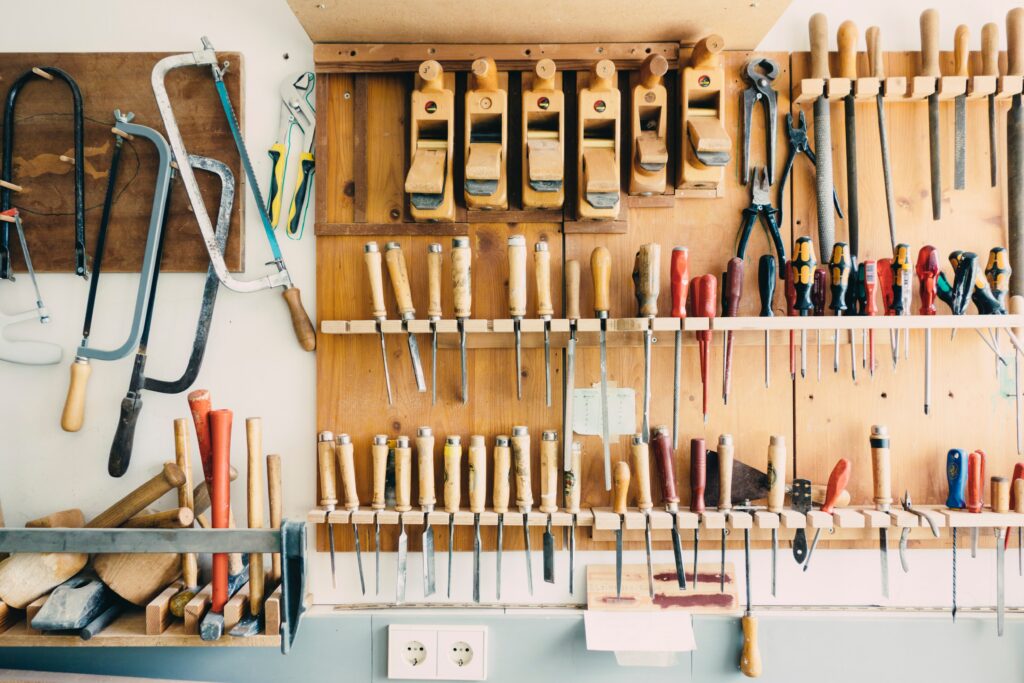
For each position, each UX designer mission… a facet of the job to be explored. Asked to accompany the reflection around a redesign of commercial offer, I was able to consider the design and facilitation of a series of workshops other than for the production of digital interface.
The objective: revise the entry-level of my client's offer and think differently about the distribution between what is offered free of charge and what is paid for.
Two additional challenges :
> Not knowing the subject, nor the challenges and details of the existing offer
> The weather! Only 2 weeks to design, lead and deliver 4 workshops
How to do ?
Above all, rely on the fundamentals of workshop facilitation: they are the experts, you are there to help them, to facilitate the expression of their ideas, their vision.
And all the right cards were already in my hands: I'm a UX designer... so I'm going to use the tools of my trade... and associate them with one of the main assets of the designer in the professional environment: PRAGMATISM!
The mission context not allowing to apply such or such design process “to the letter” (Lean UX, UCD, Design Thinking…), it often seemed more relevant to me to create workshops and an almost tailor-made method . It might take a little longer than picking up this or that workshop model, but in this context it has always worked well.
So I took the tools and techniques available, customized, adapted, invented… and I started!
A little of this, a little of that… We test and adapt as needed!
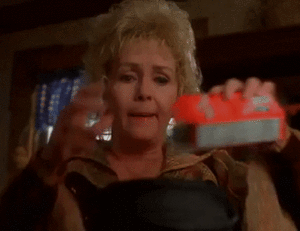
The double diamond
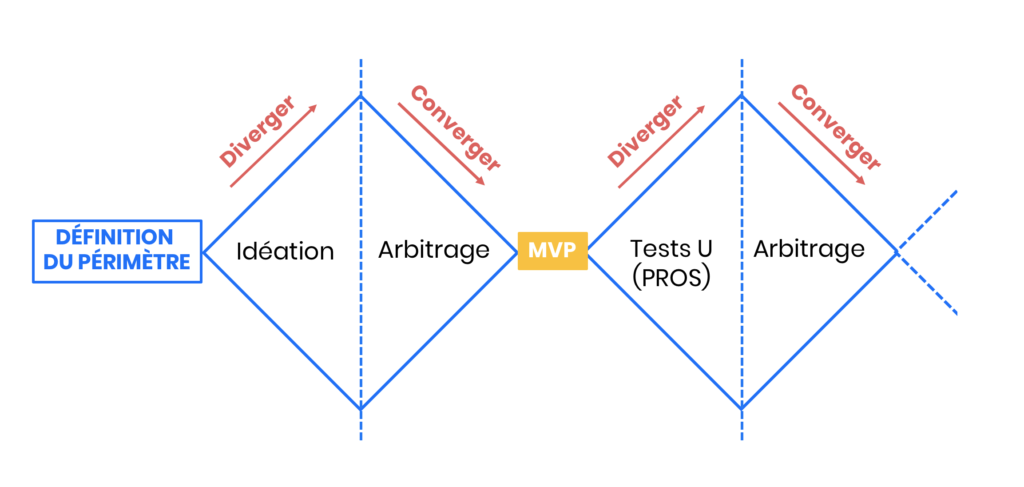
Best tool at the start of the project, to make the method concrete and enhance a user-centric approach, since it makes the test phase (in this case customer test) obvious. It is therefore a very good tool for evangelization and communication.
In macro view, this model makes it easy to pace and structure the work process for the project, since it can be applied to many contexts.
Finally, widely theorized, the double diamond legitimizes and rationalizes the position of the designer, allowing him to adopt a more serious image in front of a public less accustomed to participating in ideation workshops.
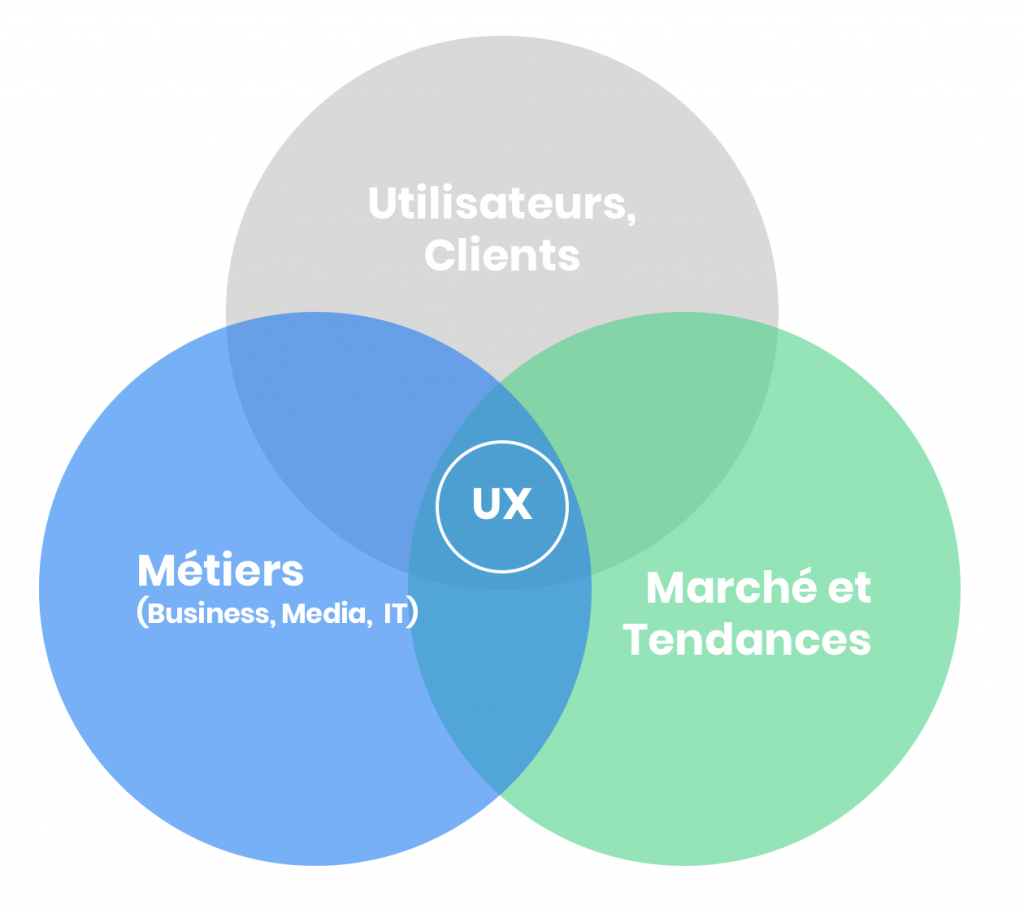
Another method to communicate at the beginning of the project
The diagram of the 3 “voices” makes it easy to materialize the 3 main families having an influence on a project:
> The market and trends
> The profession (the various professions intervening internally on the project
> The users (or customers)… the most important 🙂!!!
It works very well to easily express UX issues, involve all internal stakeholders, and finally (and above all!) put the user at least at the same “importance” as the market and/or the business, something not always easy in some contexts.
The warm-up
But before producing ideas, we must already agree on the issues!
First workshop of this series of 4: the warm-up – fundamental element of Lean-UX.
Best way to :
➜ Quickly understand the issues and the environment of the project
➜ Clarify and align visions
Given the reduced time and the number of people present (1h30 for 10 participants!!), the basic canvas had been modified, to have only 4 themes left to deal with:
➜ Expected business objectives
➜ The customer target concerned by this entry-level
➜ The brakes to be lifted
➜ Actionable levers to achieve these objectives
In the end, the attention was mainly focused on the expected objectives and especially the customer target, in other words our personas!
Perfect for taking the next step… the ideation and creativity phase!
Think out of the box!
Same structure for the following 2 workshops: open the field of possibilities and encourage creativity.
A simple brief: draw inspiration from business models deliberately different from that of the client, to be able to generate new ideas, think of things that we would not have thought of in the classic brainstorming phase.
And here we have to pull out all the stops: animation tools branded in the colors of these models, the client's logo taken over with the sauce of such and such an actor... the support of the team's graphic designers was more than invaluable in being able to embark the participants in each of the brand universes, and thus foster their creativity.
The plus to facilitate these workshops: card sorting!
Good way to give material to manipulate on something that is basically rather abstract (what do you put in free, what do you put in paying)
Result: a lot of creativity, even more so in the groups that have to be inspired by a universe that is really the opposite of that of my client (applying the business model of a video game giant to the commercial offer of a French player digital marketing for local businesses… a great exercise in creativity!)
dotmocracy
Last workshop in this series: a smaller team of decision-makers, to whom the ideas produced during the previous workshops were presented to then arbitrate on the best offer to adopt.
Because after having produced all this precious material, you have to decide... and vote !
Armed with their stickers, the participants therefore voted for the model that seemed to them the most relevant overall, then chose one or more ideas within one of the concepts.
This macro/micro combination made it possible to quickly draw the contours and the promise of the “MVP” of the offer to be tested with target customers.
Because in this project, we had the chance to go to the end of the Double Diamond, since this MVP was then tested during Focus Groups carried out with potential customers of the offer.
And finally to finish, what was the most useful…
Flexibility and pragmatism!!!
If there is a valuable tool in our trades, it is these!
We test things, we get feedback, and we adapt, even in the middle of a 3 hour workshop. It is sometimes difficult to find the right balance between a well-paced session and participants who have time to discuss and produce quality reflection.
Because they were the experts, we had to take the time to allow the participants to discuss in depth, where the role of the moderator is often to set the pace, not to allow too long debates to start.
In short… to adapt to the situation, to the people, to the context, to the moment… Always!
Did you say flexible?
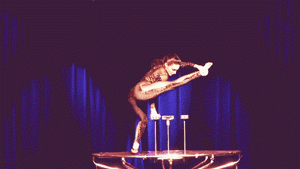
Take away :
BREAK THE ICE
Take care of your icebreakers! When all the participants do not know each other and will have to collaborate, relax the atmosphere with an ice-breaker, ideally adapted to the subject of your workshop. On a 3h workshop, do not hesitate to dedicate at least 30min to this step.
DEBRIEF
If you happen to lead two sessions of the same workshop with two different groups, always plan time to debrief the first workshop which always takes a bit of a beating, especially if you have created a workshop from scratch for your subject. . Be iterative! And adjust for your second workshop session if you have time, you will be more sure of yourself, and the next session will be even more relevant!
Otherwise don't forget to write down your “hot” feedback to keep your experience in mind and apply it in another workshop if the opportunity arises.
EVANGELIZE
A successful workshop is an opportunity to prove to skeptics that dedicating time and energy to co-creation workshops pays off! To do so, take care of your restitutions and reserve time if the context allows it to present to the widest possible audience the result of what was produced in the workshop!
Elise CARENAU UX Designer @UX-Republic
